Introduction
Throughout history, humanity has left behind an array of enigmatic structures and artifacts that continue to baffle scientists and historians alike. These ancient sites, steeped in mystery and intrigue, often defy conventional explanations and challenge our understanding of human history. They serve as tantalizing reminders of the advanced knowledge and capabilities possessed by our ancestors, capabilities that sometimes seem to transcend the technological and scientific achievements of the time.
The study of these mysterious ancient sites is crucial for several reasons. First, they offer invaluable insights into the lives, beliefs, and practices of ancient civilizations, providing a tangible connection to our past. Second, they push the boundaries of our current knowledge, prompting further research and exploration. Finally, they inspire awe and wonder, reminding us of the enduring mystery that surrounds human history.
This blog post aims to delve into ten of the most mysterious ancient sites around the world that continue to puzzle experts. From massive stone structures whose construction methods remain unknown to intricate carvings that hint at lost knowledge, these sites challenge our understanding of what ancient societies were capable of achieving. As we explore these enigmatic locations, we hope to shed light on the questions they raise and the secrets they hold. Join us on this journey through time as we uncover the mysteries of these fascinating ancient sites.
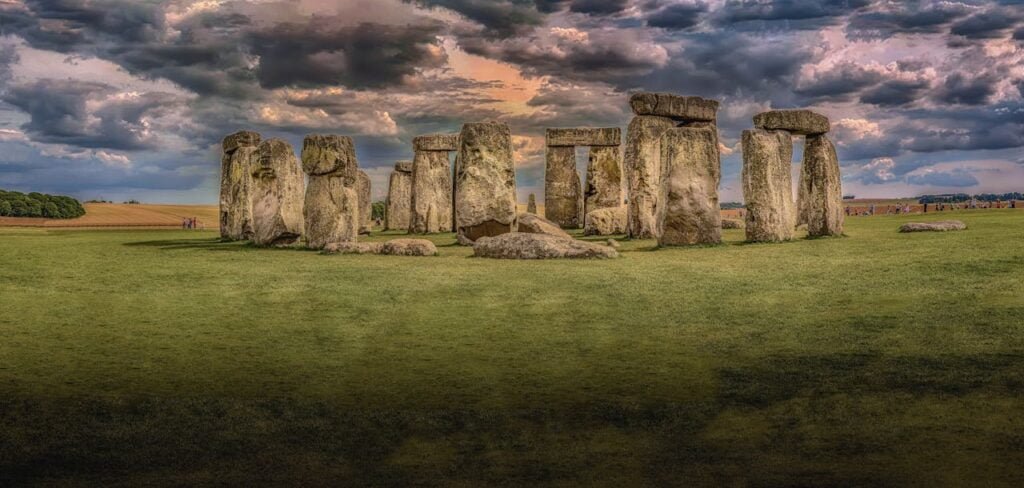
Stonehenge, England
Stonehenge, located in Wiltshire, England, stands as one of the most enigmatic ancient sites in the world. Comprising a ring of standing stones, each around 13 feet high and seven feet wide, Stonehenge\’s construction dates back to between 3000 BC and 2000 BC. The mystery of how these massive stones, some weighing up to 25 tons, were transported and erected continues to baffle scientists and historians alike. The alignment of these stones, particularly their positioning in relation to the solstices, has led to various theories about their purpose.
One prominent theory posits that Stonehenge served as an astronomical calendar, allowing ancient people to track celestial events. The precise alignment with the summer and winter solstices suggests that it could have been used to mark significant seasonal changes. Another hypothesis is that Stonehenge functioned as a burial site. Excavations in the area have revealed human remains, indicating that it may have been a place of significant ritualistic importance.
Furthermore, some researchers propose that Stonehenge was a place of worship or a site for healing. This theory is bolstered by the discovery of bluestones, which were believed to possess mystical healing properties, transported over 150 miles from Wales to the site. Despite numerous scientific studies and archaeological investigations, definitive answers regarding the exact purpose of Stonehenge remain elusive. Theories abound, but none have been universally accepted, leaving Stonehenge shrouded in mystery.
Scientific efforts to decode Stonehenge\’s secrets have included geological surveys, carbon dating, and sophisticated computer simulations to recreate its construction methods. However, these studies have only added layers of complexity rather than providing clear solutions. The enduring enigma of Stonehenge continues to captivate the imagination, representing the intersection of ancient engineering prowess and unexplained historical phenomena.
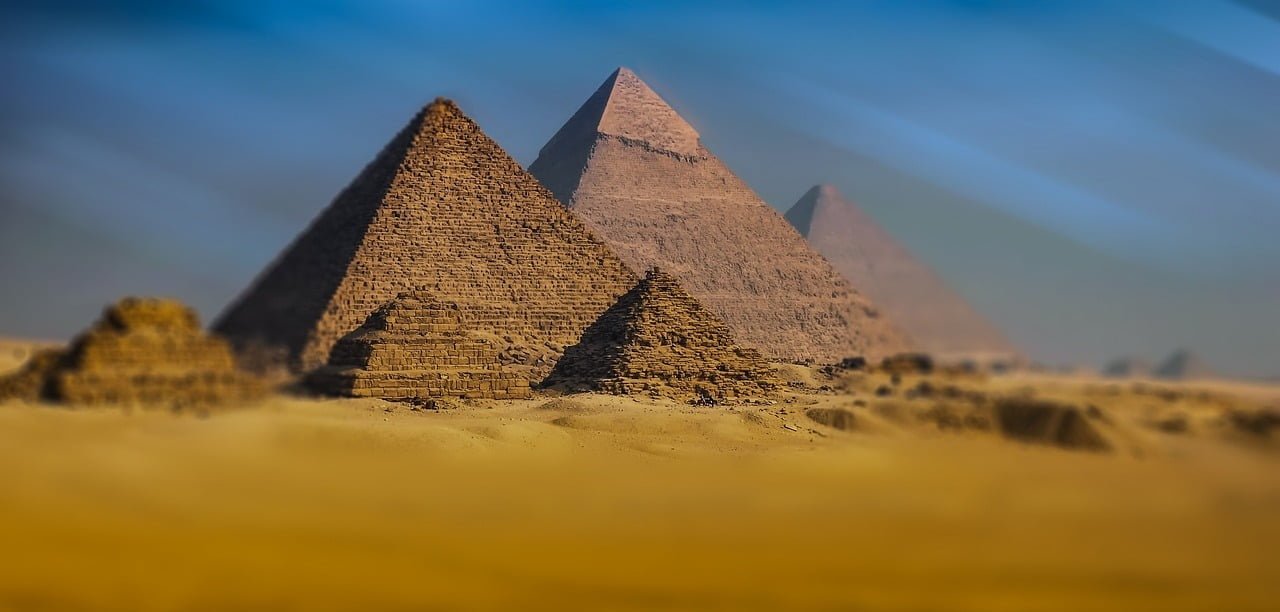
The Great Pyramids of Giza, Egypt
The Great Pyramids of Giza stand as one of the most enduring and enigmatic wonders of the ancient world. Constructed around 2580–2560 BC during the Fourth Dynasty of the Old Kingdom of Egypt, these pyramids have fascinated historians, archaeologists, and tourists alike for centuries. The precision with which these structures were built continues to baffle modern science and engineering.
The construction of the Great Pyramids, especially the Great Pyramid of Khufu, is shrouded in mystery. Each block of limestone, weighing several tons, was cut and placed with remarkable accuracy. The stones were intricately aligned, with some joints so precise that not even a sheet of paper can fit between them. This level of precision begs the question: what kind of technology and knowledge did the ancient Egyptians possess to achieve such feats?
Several theories have been proposed to explain the construction methods of the pyramids. Some suggest the use of a straight or circular ramp system to elevate the massive stones. Others propose more advanced techniques, such as the use of counterweights or even extraterrestrial assistance. Despite extensive research, no definitive method has been universally accepted, leaving the true construction techniques a subject of debate and speculation.
The purpose of the pyramids also remains a topic of intrigue. While it is generally accepted that these monumental structures served as tombs for the pharaohs, the scale and precision of the pyramids suggest that they may have had additional, perhaps ceremonial or astronomical, purposes. The alignment of the pyramids with celestial bodies and their placement on the Giza plateau imply a sophisticated understanding of astronomy and geography by their builders.
Unanswered questions about the technology and knowledge required to create the Great Pyramids of Giza continue to capture the imagination of scholars and enthusiasts. As new discoveries are made, the mystery deepens, reinforcing the pyramids\’ status as one of the most mysterious ancient sites that defy complete scientific explanation.
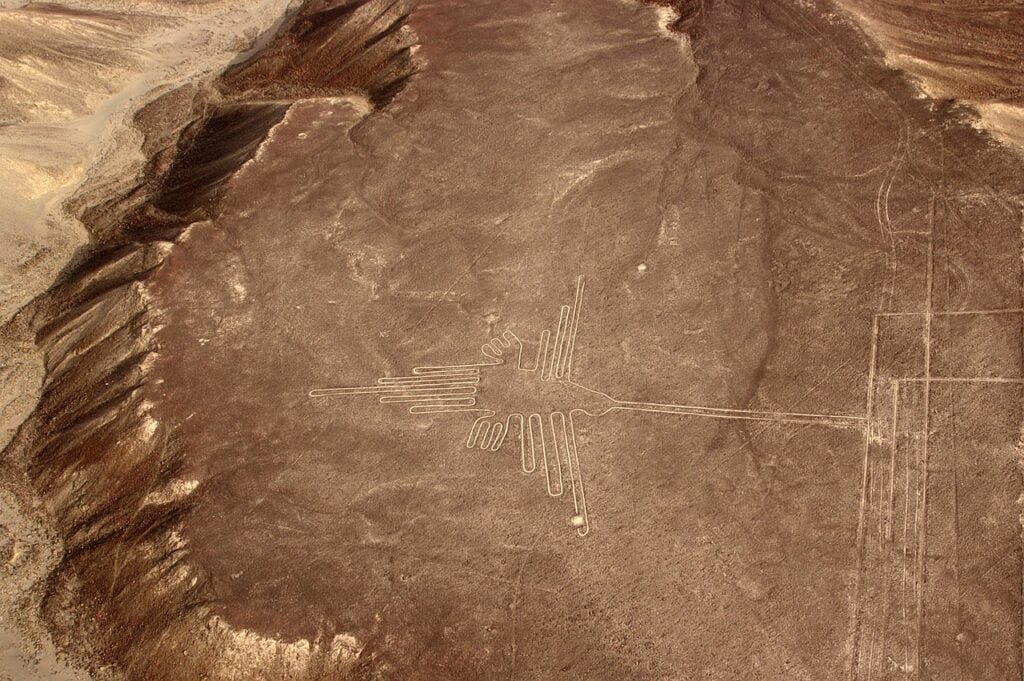
Nazca Lines, Peru
The Nazca Lines, sprawling across the arid plains of southern Peru, represent one of the most enigmatic ancient sites on Earth. These massive geoglyphs, etched into the desert floor, were first discovered by Peruvian archaeologist Toribio Mejía Xesspe in 1927. Since then, they have captivated researchers and the public alike with their sheer scale and complexity. Comprising over 800 straight lines, 300 geometric shapes, and 70 biomorphic designs depicting animals and plants, the Nazca Lines stretch over an area of approximately 500 square kilometers.
Various theories have been proposed to explain the purpose of these colossal drawings. Some researchers suggest that the lines served as astronomical markers, aligning with celestial events such as solstices and equinoxes. Others argue that they were religious symbols, perhaps created to be seen by deities from above. Another intriguing hypothesis posits that they functioned as an ancient form of communication or a giant map. Despite extensive research and numerous theories, the true purpose of the Nazca Lines remains elusive.
The creation of the Nazca Lines poses its own set of challenges. The designs were made by removing the top layer of reddish-brown iron oxide-coated pebbles to reveal the lighter-colored earth beneath. Given the sheer size of some of the geoglyphs—some stretching as long as 1,200 feet—it\’s difficult to comprehend how the ancient Nazca people managed to achieve such precision without aerial perspective. The consistent maintenance of these lines over centuries, in a region known for its harsh climate, adds another layer of complexity to their mystery.
In summary, the Nazca Lines continue to baffle scientists and researchers. Their purpose, creation, and endurance remain subjects of intense debate and fascination. As one of the world\’s most mysterious ancient sites, they offer a tantalizing glimpse into the ingenuity and capabilities of early civilizations.
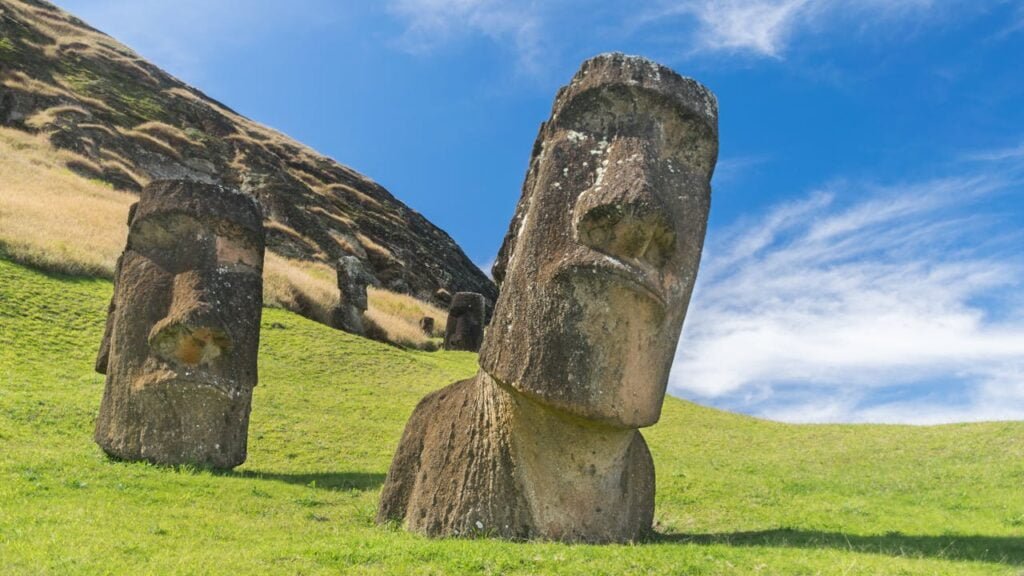
Easter Island Moai Statues, Chile
Among the most enigmatic ancient sites in the world, the Moai statues of Easter Island, also known as Rapa Nui, stand as monumental testaments to human ingenuity and mystery. These colossal statues, carved from volcanic tuff, range in height from 13 to over 33 feet and can weigh up to 82 tons. Their sheer size and the sophistication required for their creation pose perplexing questions about the capabilities of the ancient Rapa Nui civilization.
The primary enigma surrounding the Moai statues is their transportation. Despite their massive size, these monolithic figures were moved across the island to various ceremonial sites known as ahu. Scholars have proposed several theories to explain this feat, including the use of wooden sledges, rolling logs, or even a complex system of ropes and levers. However, no definitive answer has yet been established, leaving the methods of transportation shrouded in mystery.
Another intriguing aspect of the Moai statues is their purpose. Many researchers believe that these statues represent deified ancestors, serving as a means of embodying the spirits of important leaders or revered individuals. Positioned with their backs to the sea, facing inland, the Moai are thought to watch over and protect the island\’s inhabitants. This guardianship theory aligns with the cultural significance of ancestor worship among the Rapa Nui people.
Despite extensive research, numerous questions remain unanswered. How did the ancient Rapa Nui carve and transport these massive structures with limited tools and resources? What techniques did they employ to lift the statues onto their platforms? And perhaps most intriguingly, why did the construction of Moai abruptly cease? The Moai statues of Easter Island continue to captivate the imagination, inviting ongoing exploration and study into one of the world\’s most fascinating archaeological mysteries.
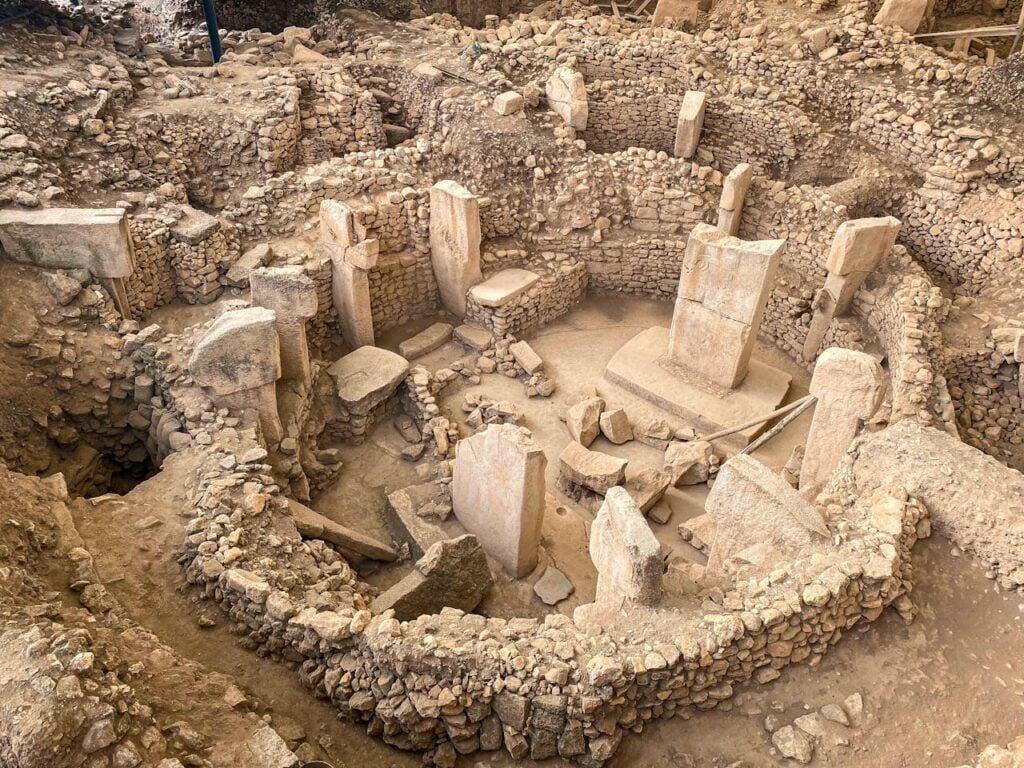
Gobekli Tepe, Turkey
Gobekli Tepe, located in southeastern Turkey, stands as one of the most enigmatic archaeological discoveries of the modern era. Unearthed in the 1990s by archaeologist Klaus Schmidt, Gobekli Tepe has astonished researchers and historians alike due to its age and complexity. Radiocarbon dating suggests that the site is over 11,000 years old, predating Stonehenge by more than six millennia. This revelation challenges previous notions about the capabilities of prehistoric societies.
The site is renowned for its massive stone pillars, some of which reach up to 18 feet in height and weigh up to 20 tons. What makes these pillars even more remarkable are the intricate carvings that adorn them. These carvings depict various animals, abstract symbols, and humanoid figures, all meticulously etched into the stone. The craftsmanship evident in these carvings indicates a high degree of sophistication, suggesting that the people who built Gobekli Tepe possessed advanced skills and knowledge.
Despite extensive research, the purpose of Gobekli Tepe remains shrouded in mystery. Some scholars propose that it served as a ceremonial site or a place of worship, given the sacred nature of the carvings and the layout of the pillars. Others speculate that it might have been a communal gathering place or even a center for social and economic activities. The lack of residential buildings and everyday artifacts at the site, however, lends more weight to the theory of its ceremonial significance.
One of the most perplexing aspects of Gobekli Tepe is how such an advanced structure could have been constructed by a society that, according to traditional archaeological understanding, should have been relatively primitive. The sheer size and weight of the pillars suggest the use of sophisticated engineering techniques, which seems improbable for a hunter-gatherer society. This conundrum has led to various theories, ranging from lost ancient technologies to external influences, but none have been definitively proven.
Gobekli Tepe continues to captivate and puzzle the scientific community, offering a tantalizing glimpse into a distant past that defies conventional wisdom. As excavations and studies proceed, it is hoped that this ancient site will eventually reveal more of its secrets, shedding light on the early development of human civilization.
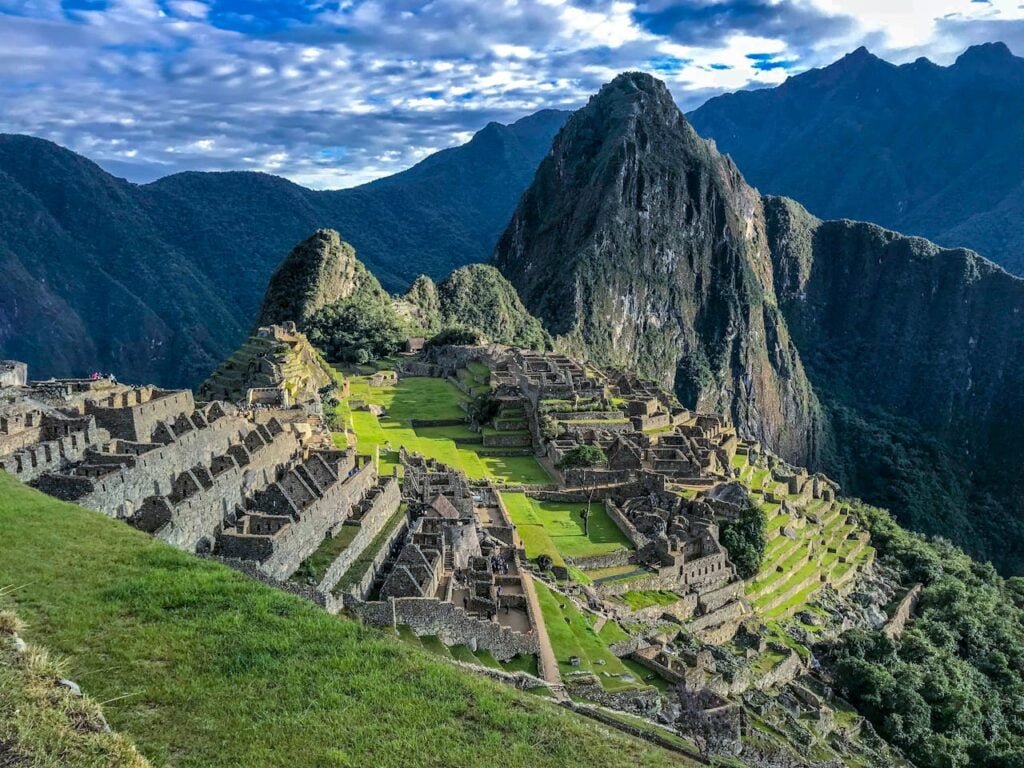
Machu Picchu, Peru
Machu Picchu, the enigmatic ancient city nestled high in the Andes Mountains of Peru, continues to baffle experts and enthrall visitors. Discovered by American explorer Hiram Bingham in 1911, this Incan marvel is renowned for its precise construction and sophisticated architecture. Despite its discovery over a century ago, numerous questions about Machu Picchu remain unanswered, particularly regarding its purpose and the methods employed in its construction.
The structures at Machu Picchu are notable for their remarkable stonework. Massive stones were cut with such precision that they fit together without mortar, a technique known as ashlar. This level of craftsmanship is one of the many aspects that puzzle archaeologists, as the Incas did not possess advanced tools or machinery. The site\’s location, atop a mountain ridge at an elevation of approximately 2,430 meters (7,970 feet), adds another layer of mystique. Transporting such large stones to this altitude would have been an extraordinary feat, yet the exact methods remain a subject of debate.
The purpose of Machu Picchu is also shrouded in mystery. Various theories have been proposed over the years. Some scholars suggest it was a royal estate for Emperor Pachacuti, who initiated its construction in the mid-15th century. Others believe Machu Picchu served as a religious site, a place where Incan priests performed sacred rituals. Another prevalent theory posits that it functioned as an astronomical observatory, with its structures and terraces aligning with celestial events, aiding in agricultural planning and ceremonial activities.
Despite extensive research, Machu Picchu retains its aura of mystery. Its combination of architectural ingenuity, strategic location, and enigmatic purpose continues to captivate and perplex researchers and tourists alike. As our understanding of the ancient world evolves, so too may our comprehension of this iconic Incan site, but for now, Machu Picchu stands as a testament to the enduring mysteries of ancient civilizations.
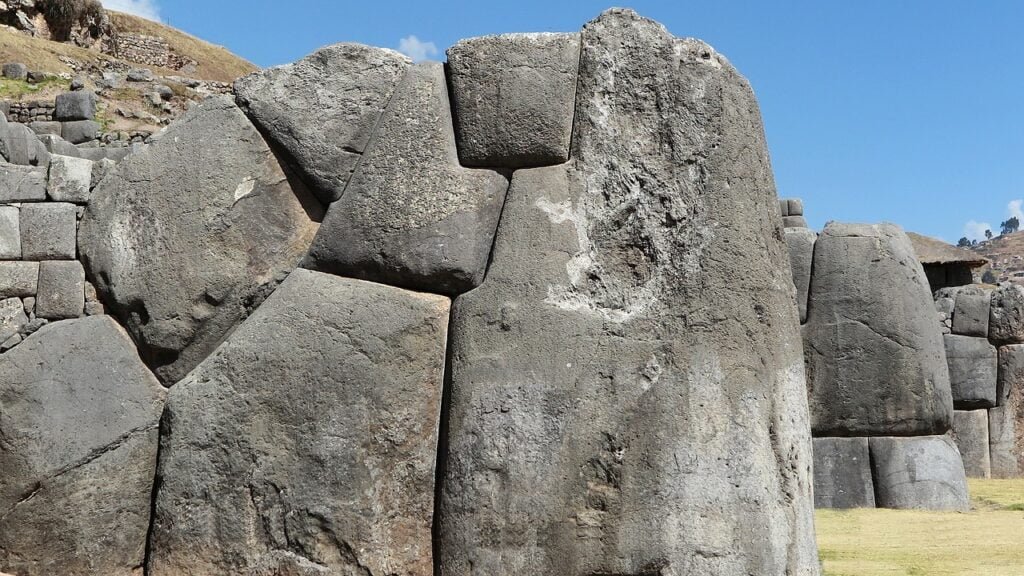
Sacsayhuaman, Peru
Perched on a hill overlooking the city of Cusco, Sacsayhuaman is an enigmatic ancient fortress that continues to baffle historians and archaeologists. This impressive structure is renowned for its massive, intricately cut stone walls. Each stone fits together with remarkable precision, and it is said that not even a single piece of paper can be inserted between the stones. What remains a profound mystery is how these colossal stones, some weighing as much as 200 tons, were quarried, transported, and assembled without the use of mortar or modern machinery.
The construction techniques employed in building Sacsayhuaman have long been a subject of debate. One prevailing theory suggests that the stones were shaped using a combination of bronze or stone tools and a technique known as \”pecking and grinding.\” However, this theory does not fully explain the extraordinary precision observed in the stonework. Another hypothesis proposes that the builders used a form of plant-based or animal fat-based lubricant to move the stones. Yet, this idea remains speculative due to the lack of concrete evidence.
In addition to the construction techniques, the purpose of Sacsayhuaman also invites speculation. While some researchers believe it served as a military fortress designed to protect the Inca capital of Cusco, others argue that it had a more ceremonial or religious significance. The site\’s alignment with astronomical events and its proximity to other sacred sites lend weight to the theory that it may have been a ceremonial center. Yet, the true intent behind this marvel of engineering remains elusive.
As scholars continue to study and explore Sacsayhuaman, it stands as a testament to the ingenuity and skill of its ancient builders. Despite the numerous theories, the fortress remains one of the world\’s most mysterious ancient sites, leaving us to wonder about the lost knowledge and techniques of the past.
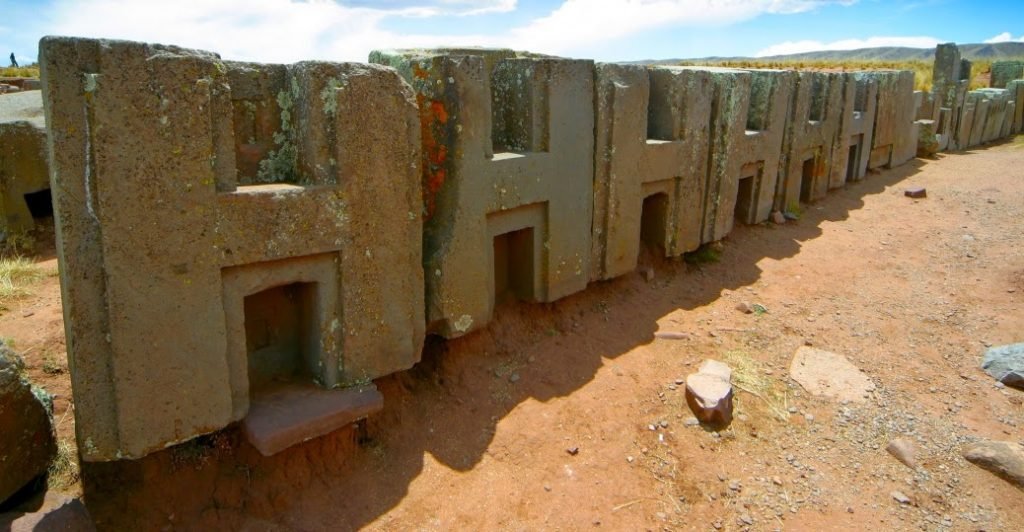
Pumapunku, Bolivia
Nestled high in the Andes Mountains, the ancient site of Pumapunku forms a significant part of the Tiwanaku complex in Bolivia. This archaeological marvel is renowned for its intricately carved stone blocks, which are among the most precisely cut and fitted in the ancient world. The stones, some weighing as much as 130 tons, were not only transported over considerable distances but also assembled with such precision that the use of advanced technology is often speculated.
One of the most striking features of Pumapunku is the extraordinary precision of its stonework. The blocks are so finely cut and seamlessly interlocked that not even a razor blade can fit between them. This has led many to question the methods and tools used by the Tiwanaku people, as such accuracy seems to surpass the technological capabilities of the era. Some theories suggest that the builders used advanced forms of cutting tools, possibly even unknown to us today, to achieve such meticulous craftsmanship.
The transportation of these massive stone blocks also remains a mystery. Conventional explanations, such as the use of wooden rollers or sledges, appear inadequate given the terrain and the sheer size of the stones. Alternative theories propose that the Tiwanaku people might have possessed knowledge of levitation or other lost technologies. Additionally, the exact purpose of Pumapunku remains elusive. While some archaeologists believe it served as a religious or ceremonial site, others argue it could have been an administrative center, or even a gateway to otherworldly realms, based on the complex symbolism and astronomical alignments found at the site.
Pumapunku continues to intrigue both scholars and enthusiasts, offering a tantalizing glimpse into a civilization whose full capabilities and knowledge remain largely unexplained. As researchers delve deeper into its mysteries, Pumapunku stands as a testament to the ingenuity and sophistication of ancient societies, challenging our understanding of history and technology.
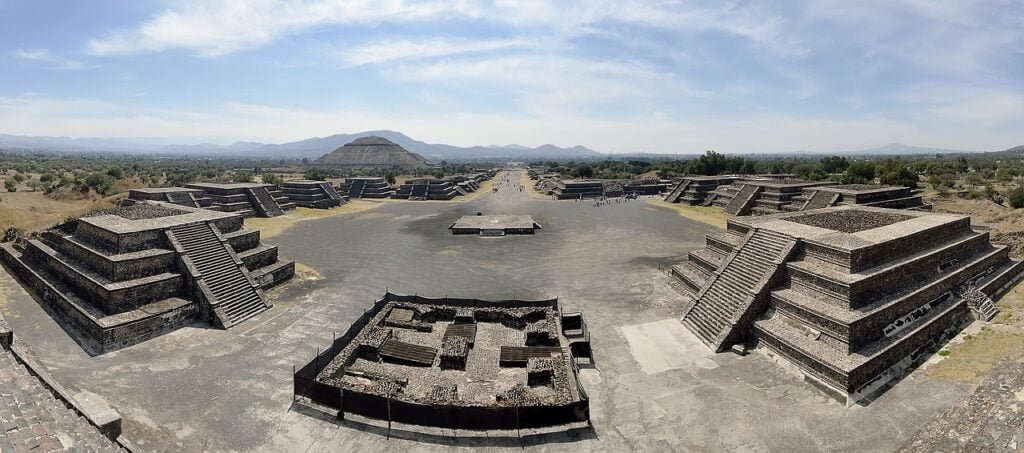
Teotihuacan – Mexico
Teotihuacan, located in the Valley of Mexico, is an ancient city shrouded in mystery and intrigue. Established around 200 BC, it became one of the largest and most influential cities in the pre-Columbian Americas, peaking at a population of over 125,000 people. Despite its prominence, much about Teotihuacan’s origins, its builders, and the reasons for its decline around 550 AD remain unknown, making it a subject of intense archaeological interest.
The city’s most iconic structures are the Pyramid of the Sun and the Pyramid of the Moon, massive stone edifices that dominate the landscape. The Pyramid of the Sun, in particular, stands at a height of 65 meters, making it one of the largest pyramids in the world. These pyramids align with celestial events, suggesting a deep understanding of astronomy by the city’s builders. The precision with which these structures were built, using materials and techniques still not fully understood, adds to their mysterious allure.
Teotihuacan’s layout itself is a marvel of urban planning. The city’s grid pattern, with wide avenues and extensive residential complexes, reflects a high level of social organization. The Avenue of the Dead, a central thoroughfare, runs through the heart of the city, lined with temples, palaces, and other monumental buildings. The city’s advanced infrastructure includes complex irrigation systems and evidence of extensive trade networks, indicating Teotihuacan’s role as a major economic hub.
One of the most puzzling aspects of Teotihuacan is the lack of written records. Unlike other Mesoamerican civilizations such as the Maya, Teotihuacan left behind no decipherable inscriptions or texts. This absence has led to much speculation about the city’s social and political structure. Some scholars believe Teotihuacan was a theocracy ruled by a priestly class, while others suggest it may have been governed by a council of elites.
The sudden decline of Teotihuacan around 550 AD remains one of its greatest mysteries. Archaeological evidence points to a period of internal strife, with widespread fires and signs of violence suggesting a possible uprising or invasion. The reasons behind this upheaval and the fate of the city’s inhabitants continue to be topics of debate and research.
Teotihuacan’s influence extended far beyond its borders, impacting contemporary and later civilizations across Mesoamerica. The city’s architectural and cultural legacy can be seen in the ruins of other ancient sites and in the traditions of indigenous peoples. Today, Teotihuacan is a UNESCO World Heritage Site and a major tourist destination, drawing visitors from around the world who are captivated by its grandeur and mystery.
In conclusion, Teotihuacan stands as a testament to the ingenuity and sophistication of ancient civilizations. Its monumental structures, advanced urban planning, and enigmatic history continue to inspire awe and curiosity. Despite ongoing research, Teotihuacan retains many of its secrets, inviting us to delve deeper into the mysteries of this ancient city.
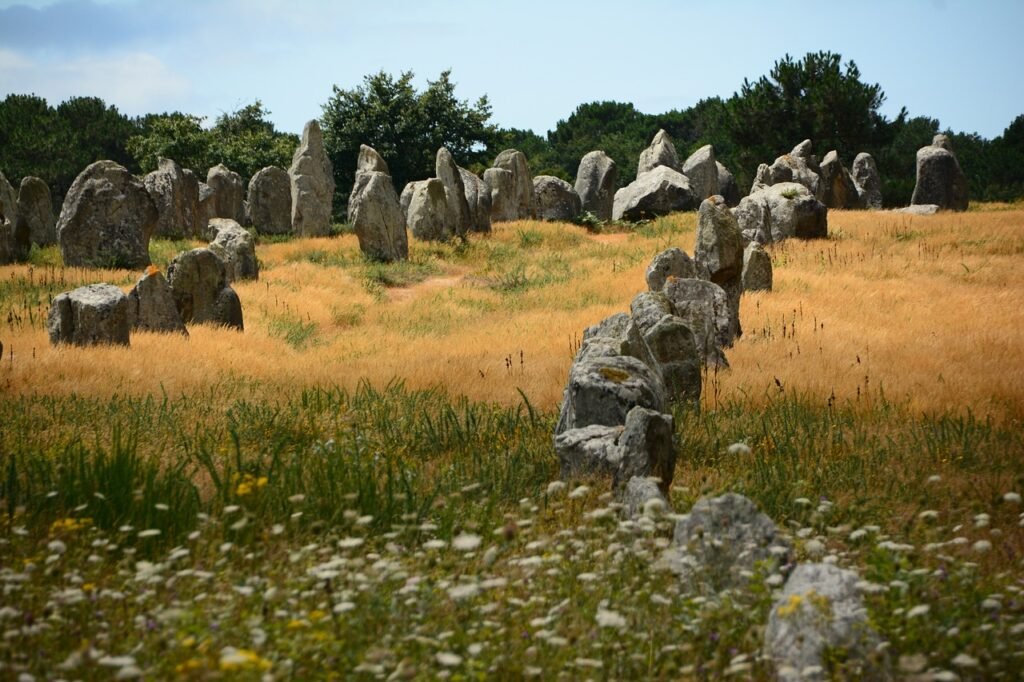
The Carnac Stones – France
The Carnac Stones, located in the Brittany region of France, are one of the most extensive and enigmatic megalithic sites in the world. This prehistoric monument complex consists of over 3,000 standing stones, erected by pre-Celtic people during the Neolithic period, around 4500 BC. The stones are arranged in various configurations, including long rows, circles, and individual monoliths, spanning over four kilometers.
What makes the Carnac Stones particularly mysterious is the purpose behind their arrangement. Unlike other megalithic sites like Stonehenge, which have clear astronomical alignments, the exact function of the Carnac Stones remains unclear. Some theories suggest they were used for ceremonial or religious purposes, possibly as a site for ancestral worship or community gatherings. Others propose that the stones served as markers for astronomical observations or as a form of prehistoric calendar.
The sheer scale and precision of the Carnac Stones are awe-inspiring. The largest stones, known as menhirs, stand over six meters tall and weigh several tons. The effort required to quarry, transport, and erect these massive stones suggests a highly organized society with advanced knowledge of engineering and coordination. The alignment of the stones in long rows, such as the famous Ménec alignments, indicates a deliberate and systematic approach to their placement.
The legends and folklore surrounding the Carnac Stones add to their mystique. Local myths tell of the stones being ancient warriors turned to stone by a powerful spell, or of them being used as a navigational aid by the Druids. These stories, while not scientifically substantiated, reflect the deep cultural significance of the site to the people who lived in the region for millennia.
Despite extensive study, many questions about the Carnac Stones remain unanswered. The lack of written records from the Neolithic period means that much of what we know is based on archaeological findings and educated speculation. Recent advances in technology, such as ground-penetrating radar and 3D modeling, have provided new insights into the site, but the full story of the Carnac Stones continues to elude us.
The Carnac Stones’ enigmatic presence has made them a focal point for both scientific research and tourism. Each year, thousands of visitors flock to Brittany to marvel at these ancient stones and ponder their purpose. The site is protected by French law, ensuring its preservation for future generations to explore and study.
In conclusion, the Carnac Stones stand as a testament to the ingenuity and mystery of our prehistoric ancestors. Their purpose, construction, and significance continue to be subjects of fascination and debate. As we uncover more about this ancient site, we are reminded of the enduring legacy of human creativity and the mysteries that still lie hidden in our past.
Conclusion
As we have journeyed through the top 10 mysterious ancient sites around the world, it is evident that these locations continue to baffle and fascinate both scientists and enthusiasts alike. Each site, from the enigmatic Stonehenge in England to the perplexing Nazca Lines in Peru, offers a glimpse into the ingenuity and sophistication of ancient civilizations. Despite extensive research and technological advancements, many questions remain unanswered, leaving these sites shrouded in mystery.
These ancient sites not only challenge our understanding of human history but also push the boundaries of our knowledge regarding ancient technology and cultural practices. The Great Pyramids of Giza, for example, raise intriguing questions about the methods used in their construction, while the intricate carvings of Gobekli Tepe in Turkey suggest a level of craftsmanship and societal organization that predates our current historical timelines. Similarly, the underwater ruins of Yonaguni in Japan continue to spark debate about their origins and purpose.
The enduring mysteries of these ancient sites serve as a reminder that human history is far more complex and intertwined than we might have previously thought. They inspire curiosity and encourage us to delve deeper into the past, to uncover the secrets that have been lost to time. As we continue to explore and study these enigmatic locations, we gain not only a greater appreciation for the achievements of our ancestors but also a deeper understanding of the human spirit\’s relentless pursuit of knowledge and progress.
In light of these reflections, it is clear that there is still much to learn about our ancient past. These mysterious sites invite us to keep questioning, to remain open to new discoveries, and to embrace the possibility that the story of humanity is far from complete. Let us continue to explore these ancient wonders, for in doing so, we honor the legacy of those who came before us and pave the way for future generations to uncover the truths that remain hidden in the sands of time.



Recent Comments